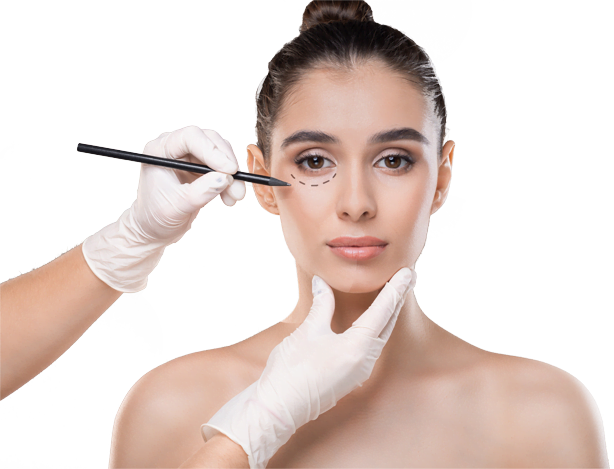Jaw reduction, also known as jaw reshaping or tapering, is a cosmetic procedure designed to alter the size and shape of the jawline. It aims to achieve a more balanced and harmonious facial appearance by reducing the prominence of the jaw. This article will explore the various aspects of jaw reduction, including the procedures involved, benefits, risks, and recovery.
Table of Contents
2. Understanding Jaw Reduction
Jaw reduction is a popular cosmetic procedure primarily performed for aesthetic purposes. It involves altering the contours of the jawline to create a softer, more feminine or masculine appearance, depending on the desired outcome. This procedure is suitable for individuals with a square or overly prominent jawline that may be caused by genetics, muscle hypertrophy, or skeletal structure.
3. The Reasons for Jaw Reshaping
There are several reasons why individuals opt for jaw reshaping procedures:
- Facial Symmetry: Jaw reduction can help enhance facial symmetry by bringing the jawline into better proportion with the rest of the face.
- Feminization or Masculinization: Some individuals seek jaw reshaping to achieve a more feminine or masculine facial appearance.
- Self-Confidence: A more balanced and proportionate jawline can boost self-confidence and improve overall facial aesthetics.
- Correcting Jaw Discrepancies: Jaw reduction can address jaw discrepancies, such as a protruding or asymmetrical jawline, creating a more harmonious facial profile.
4. Jaw Reduction Procedures
Jaw reduction procedures can be classified into two categories: non-surgical and surgical. The choice of procedure depends on various factors, including the individual’s goals, anatomy, and preferences.
4.1 Non-Surgical Jaw Reduction
Botox Injections
Botox injections can be used for non-surgical jaw reduction. Botulinum toxin is injected into the masseter muscles, which are responsible for the bulkiness of the jawline. The toxin weakens these muscles, resulting in a slimmer jaw appearance. This procedure is temporary and requires periodic maintenance injections.
Dermal Fillers
Dermal fillers can also be utilized for jaw reshaping. Hyaluronic acid fillers are strategically injected into specific areas of the jawline to create a more defined and contoured look. Dermal fillers provide immediate results, but like Botox, they are temporary and require repeat treatments to maintain the desired outcome.
4.2 Surgical Jaw Reduction
Mandibular Angle Reduction
Mandibular angle reduction surgery involves removing a small portion of the jawbone at the rear of the jaw. This procedure is suitable for individuals with a square jawline caused by enlarged or prominent mandibular angles. It helps achieve a more tapered and refined jawline contour.
Chin Reduction
Chin reduction surgery can be performed to reduce the size of a prominent or protruding chin. It involves removing a portion of the chin bone to create a more balanced and proportionate facial profile. Chin reduction can complement jaw reduction procedures and enhance overall facial harmony.
V-Line Surgery
V-Line surgery is a comprehensive jaw reduction procedure widely popular in Asian countries. It involves reshaping the jawline from the chin to the angle of the jaw, creating a V-shaped contour. This procedure combines chin reduction, mandibular angle reduction, and muscle modification techniques to achieve the desired outcome.
5. Choosing the Right Procedure
Choosing the right jaw reduction procedure requires careful consideration and consultation with a qualified plastic surgeon or dermatologist. Factors such as the individual’s facial structure, goals, medical history, and recovery time should be taken into account. A thorough examination and discussion of expectations will help determine the most suitable approach for achieving the desired results.
6. The Benefits of Jaw Reduction
Jaw reduction offers numerous benefits for individuals seeking facial harmony and improved aesthetics:
- Enhanced Facial Proportions: Jaw reshaping can bring the jawline into better balance with other facial features, creating a more proportionate appearance.
- Facial Feminization or Masculinization: Jaw reduction can help achieve a more feminine or masculine facial appearance, depending on the desired outcome.
- Boosted Confidence: Improving the aesthetics of the jawline can enhance self-confidence and overall satisfaction with one’s appearance.
- Personalized Results: Jaw reduction procedures can be tailored to suit individual goals and preferences, ensuring natural-looking and harmonious outcomes.
7. Potential Risks and Side Effects
As with any surgical or minimally invasive procedure, jaw reduction carries potential risks and side effects. These can include:
- Swelling and bruising
- Temporary numbness
- Infection
- Adverse reaction to anesthesia
- Uneven or asymmetrical results
It is essential to discuss these risks with the healthcare professional performing the procedure to make an informed decision.
8. Recovery and Aftercare
Recovery and aftercare following jaw reduction procedures vary depending on the chosen technique. Surgical procedures generally require a longer recovery period compared to non-surgical options. It is crucial to follow post-operative instructions provided by the surgeon or dermatologist, which may include:
- Resting and avoiding strenuous activities
- Applying cold compresses to reduce swelling
- Taking prescribed medications as directed
- Maintaining a soft diet during the initial healing phase
- Attending follow-up appointments for monitoring and evaluation
9. Frequently Asked Questions (FAQs)
Q1: Is jaw reduction suitable for everyone? A1: Jaw reduction procedures are suitable for individuals who have a square or prominent jawline and desire a more tapered or balanced facial appearance. However, it is essential to consult with a qualified professional to determine the best approach based on individual anatomy and goals.
Q2: Are jaw reduction results permanent? A2: Non-surgical jaw reduction procedures such as Botox and dermal fillers offer temporary results, typically lasting several months. Surgical procedures can provide longer-lasting or permanent outcomes, but aging and natural changes in the facial structure can still occur over time.
Q3: Are jaw reduction procedures painful? A3: Discomfort or pain following jaw reduction procedures can vary depending on the technique used and individual pain tolerance. Surgical procedures may involve more significant discomfort, which can be managed with prescribed pain medications. Non-surgical procedures typically cause minimal discomfort.
Q4: Can I combine jaw reduction with other facial procedures? A4: Yes, jaw reduction procedures can be combined with other facial procedures to achieve comprehensive results. Commonly combined procedures include chin augmentation, rhinoplasty, and facial fat grafting. Your surgeon or dermatologist can guide you on the suitability of combining procedures based on your specific needs.
Q5: How long does it take to see the final results of jaw reduction? A5: The timeline for final results depends on the chosen procedure. Non-surgical options such as Botox and dermal fillers provide immediate results, while surgical procedures may require several weeks or months for complete healing and settling of the tissues. The surgeon or dermatologist will provide guidance on expected timelines.
Conclusion
Jaw reduction procedures offer individuals the opportunity to achieve a more balanced and harmonious facial appearance by reshaping and tapering the jawline. Whether through non-surgical techniques like Botox and dermal fillers or surgical procedures like mandibular angle reduction and chin reduction, jaw reshaping can enhance facial symmetry, boost self-confidence, and provide personalized results. It is crucial to consult with a qualified professional to determine the most suitable procedure based on individual goals, anatomy, and preferences.

